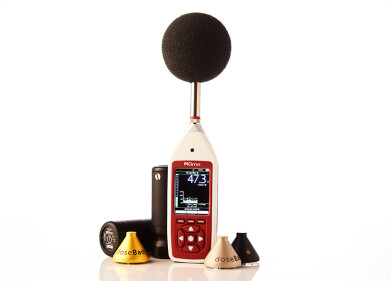Health & safety
What Is Mercury Poisoning?
Mar 25 2022
Mercury poisoning is a condition which afflicts individuals who are exposed to dangerous concentrations of the toxic element, mercury. The exact symptoms of mercury poisoning can differ depending on the specific type of mercury involved, as well as the method of exposure. However, as a known neurotoxin, mercury can cause serious physical, cognitive and emotional complications, even leading to death in extreme scenarios.
The most common form of mercury poisoning is caused by consuming fish or seafood which have high levels of mercury in their bodies. This occurs due to a process as biomagnification, which will be explained in further detail below. However, mercury can also be ingested via other means, as well as inhaled in vapours and absorbed dermatologically through the skin.
How do people contract mercury poisoning?
As mentioned above, most mercury poisoning cases occur due to the patient ingesting fish or seafood containing high concentrations of mercury. In particular, this occurs with a specific type of organic mercury known as methylmercury, which is created by tiny marine-dwelling microorganisms, then consumed by larger and larger predators.
Because the methylmercury is not excreted by the animals and has a lengthy half-life, it bioaccumulates in the food chain. As a result, larger fish, such as tuna, dolphins, sharks and swordfish, harbour disproportionately high levels of mercury in their body. This phenomenon is known as biomagnification and means that societies which rely on fish and seafood consumption for much of their diet are at greater risk of seafood exposure.
Meanwhile, other types of mercury can cause mercury poisoning via different means. For example, inorganic mercury compounds are found in disinfectants, batteries and chemistry laboratories and can have harmful effects when swallowed. Elemental mercury, which is used in thermometers, fluorescent lamps, dental amalgams and electrical switches, is not harmful when touching the skin or ingested, but can cause poisoning if vapourised and inhaled.
What are the symptoms of mercury poisoning?
The exact symptoms of mercury poisoning vary depending on the type of mercury and method of exposure. When high amounts of methylmercury are consumed, they can cause a type of poisoning known as Minamata disease. This manifests itself in the shape of weakness in the muscles, difficulty coordinating or walking, speech, hearing and vision impairments and prickling sensations in the extremities or mouth. More serious outcomes include cognitive difficulties, kidney problems and even death.
Inorganic mercury compounds can cause vomiting, diarrhoea and burning in the stomach when ingested. If the substance is allowed to enter the bloodstream, it can have even more grave ramifications, including renal and brain functioning. Elemental mercury is only dangerous when inhaled, but in that case it can cause coughing, difficulty breathing and swollen gums. High levels of exposure can permanently damage the lungs and brain, even killing on occasion.
In order to ensure that mercury poisoning is identified and treated (using medication known as chelators) as soon as possible, it is necessary to perform robust monitoring procedures. This includes in the environment and the food sources to which humans are exposed, but also on an individual’s hair, urine and blood. For more information on mercury monitoring techniques, the upcoming International Conference on Mercury as a Global Pollutant (ICMGP) in July is accessible online for all interested parties.
Digital Edition
IET 35.2 March
April 2025
Air Monitoring - Probe Sampling in Hazardous Areas Under Extreme Conditions - New, Game-Changing Sensor for Methane Emissions - Blue Sky Thinking: a 50-year Retrospective on Technological Prog...
View all digital editions
Events
May 06 2025 Nuremberg, Germany
May 10 2025 Karachi, Pakistan
May 11 2025 Vienna, Austria
May 11 2025 Seoul, South Korea
Salon Analyse Industrielle & Instrumentation
May 14 2025 Paris, France





.jpg)

_(4427399123)-(2).jpg)











